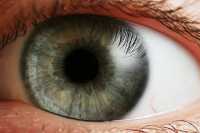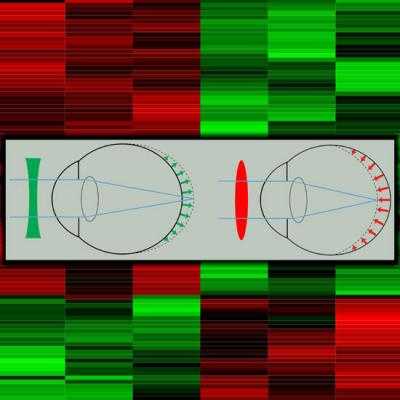
09 Oct Why Are So Many People Near-Sighted?
MedicalResearch.com Interview with:
Andrei V. Tkatchenko, M.D., Ph.D.
Associate Professor
Columbia University Medical Center
Edward S. Harkness Eye Institute
New York, NY 10032
MedicalResearch.com: What is the background for this study? What are the main findings?
Response: Clear distance vision is rapidly becoming a rare privilege around the world, especially in Asia, due to increasing prevalence of myopia.
Although much effort has been directed towards elucidating the mechanisms underlying refractive eye development and myopia, treatment options for myopia are mostly limited to optical correction, which does not prevent progression of myopia or pathological blinding complications often associated with the disease. During early childhood development, the axial length of the eye normally grows to match its optical power in a process called emmetropization, producing focused images on the retina. However, very often environmental and genetic factors lead to a mismatch between the optical power of the eye and its axial length resulting in the development of myopia if eyes grow too long for their optical power. Experimental studies in many animal species suggest that emmetropization is regulated by optical defocus. The eye can compensate for imposed negative and positive optical defocus by increasing or decreasing its growth rate, respectively. However, the molecular mechanisms underlying emmetropization are poorly understood which prevents development of anti-myopia drugs.
MedicalResearch.com: What are the main findings?
Research: We found that emmetropization is regulated bidirectionally by two different sets of signaling pathways; one underlying response to negative defocus and the other that underlies response to positive defocus. We refer to this mechanism as Bidirectional Emmetropization by the Sign of Optical Defocus (BESOD). We also identified key signaling pathways underlying retinal responses to the defocus of different signs, which provides the framework for the development of anti-myopia drugs.

This image shows the effect of negative (green) and positive (red) lenses on eye growth and the heatmap depicting clusters of genes differentially expressed in the retina in response to optical defocus.
Credit:
Andrei V. Tkatchenko
MedicalResearch.com: What should readers take away from your report?
Response: Environmental factors such as nearwork and reading generate imposed negative defocus on the retina and can cause myopia. The impact of myopia-causing environmental factors on each individual (and whether or not this individual will develop myopia) is determined by the genetic background of that individual and individual genetic variations within the molecular pathways that control the eye’s response to positive and negative defocus. How well we understand molecular signaling pathways underlying eye’s response to defocus will determine our ability to develop effective pharmacological treatment options for myopia.
MedicalResearch.com: What recommendations do you have for future research as a result of this work?
Response: Future research should be focused on gaining deeper understanding of the genes and signaling pathways underlying emmetropization and development of myopia. Clearly, more funding should be directed towards systems genetics and pharmacogenomics approaches because I believe that this is the most promising path to finding a cure for myopia.
MedicalResearch.com: Is there anything else you would like to add?
Response: We are entering a new era in myopia research, as systems genetics approaches open new ways to explore molecular signaling underlying development of myopia on a whole-genome scale. This will undoubtedly lead to the development of new effective treatment options for myopia.
This work served as a basis for a patent application titled “Process of treating myopia by modulating retinal signaling pathways underlying retinal response to positive and negative optical defocus”.
Citation:
Gene expression in response to optical defocus of opposite signs reveals bidirectional mechanism of visually guided eye growth
Tatiana V. Tkatchenko,, David Troilo , Alexandra Benavente-Perez ,Andrei V. Tkatchenko
PLOS Biology Published: October 9, 2018
[wysija_form id=”3″]
[last-modified]
The information on MedicalResearch.com is provided for educational purposes only, and is in no way intended to diagnose, cure, or treat any medical or other condition. Always seek the advice of your physician or other qualified health and ask your doctor any questions you may have regarding a medical condition. In addition to all other limitations and disclaimers in this agreement, service provider and its third party providers disclaim any liability or loss in connection with the content provided on this website.
Last Updated on October 9, 2018 by Marie Benz MD FAAD
